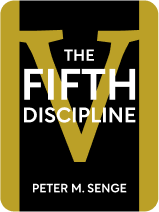

This article is an excerpt from the Shortform book guide to "The Fifth Discipline" by Peter M. Senge. Shortform has the world's best summaries and analyses of books you should be reading.
Like this article? Sign up for a free trial here.
What does Peter Senge mean by a “shared vision”? What can you, as a leader, do to create a sense of shared vision among your employees?
A shared vision is the third discipline in Peter Senge’s framework for creating a learning organization. According to Peter Senge, a shared vision gives the organization the energy and perseverance to work toward its long-term goals.
Here’s how you can instill a sense of shared vision among the people working for your organization.
What Is a Shared Vision?
According to Peter Senge, a shared vision forms when people orient their personal objectives toward an overarching goal. In other words, an organization comes together and says, “This is the future we want,” and then each member of that organization does his or her best to realize that vision.
That doesn’t mean everyone has exactly the same vision, or that they sacrifice their personal aspirations for the shared vision. Rather, everyone’s personal motivations influence how they view the common mission: Each person will approach the common mission in a slightly different way based on their own experiences, duties, and worldview. In fact, when coming up with a common mission, Senge advises you to find out what’s most important to each of your employees and to try to work those goals into it.
How a Shared Vision Ties Into the Big Picture
Your company’s shared vision is your end goal, and systems thinking helps you to create and refine that goal, as well as see how to get there. The variety in perspectives from employees all working toward the same goal will help the company as a whole to learn, grow, and find creative solutions to problems.
While your vision should be audacious and inspiring, the steps you take to reach it don’t have to be. Senge explains that you can get big results from small changes, but the most effective changes are often the least obvious ones:, You don’t necessarily need to make big changes, you just need to make the right changes. Of course, which changes are the right ones will depend on your organization and the market you’re operating in. Having a lot of different perspectives and ideas will help you to find and make those less-obvious changes; one person might find a solution that others have overlooked.
(Shortform note: In Range, David Epstein strongly emphasizes the importance of organizations gathering diverse opinions from people who have had many different experiences. In other words, while it’s good to get ideas from a lot of different people, it’s even better if those people come from different backgrounds (for example, ethnic backgrounds or professional backgrounds). By bringing together such diverse knowledge and points of view, the company is more likely to find innovative and effective ways to solve problems and achieve its goals.)
| How Small Changes Add Up In Atomic Habits, entrepreneur James Clear discusses how small adjustments in your day-to-day habits can come together to create powerful changes in your life. Habits compound upon each other—one good habit inspires you to adopt another, and another, and so on until your life is completely transformed. For example, getting in the habit of taking a short walk each day is a good step toward long-term health; however, as you start feeling better from the exercise, you might find yourself inspired to also take up a sport or start eating healthier. We can apply this same principle to a company or organization: Small adjustments to processes and policies—essentially, the organization’s “habits”—can add up to major improvements in productivity, employee happiness, and customer satisfaction. This is especially true if a small change leads to good feedback from customers or employees. That positive response could then inspire you to make further helpful changes, creating a positive feedback loop that leads to ever-improving outcomes. |

———End of Preview———
Like what you just read? Read the rest of the world's best book summary and analysis of Peter M. Senge's "The Fifth Discipline" at Shortform.
Here's what you'll find in our full The Fifth Discipline summary:
- Why an organization should encourage its members to constantly learn and develop their skills
- The five disciplines for creating an evolving organization
- Why you should constantly assess and update what you think you know






